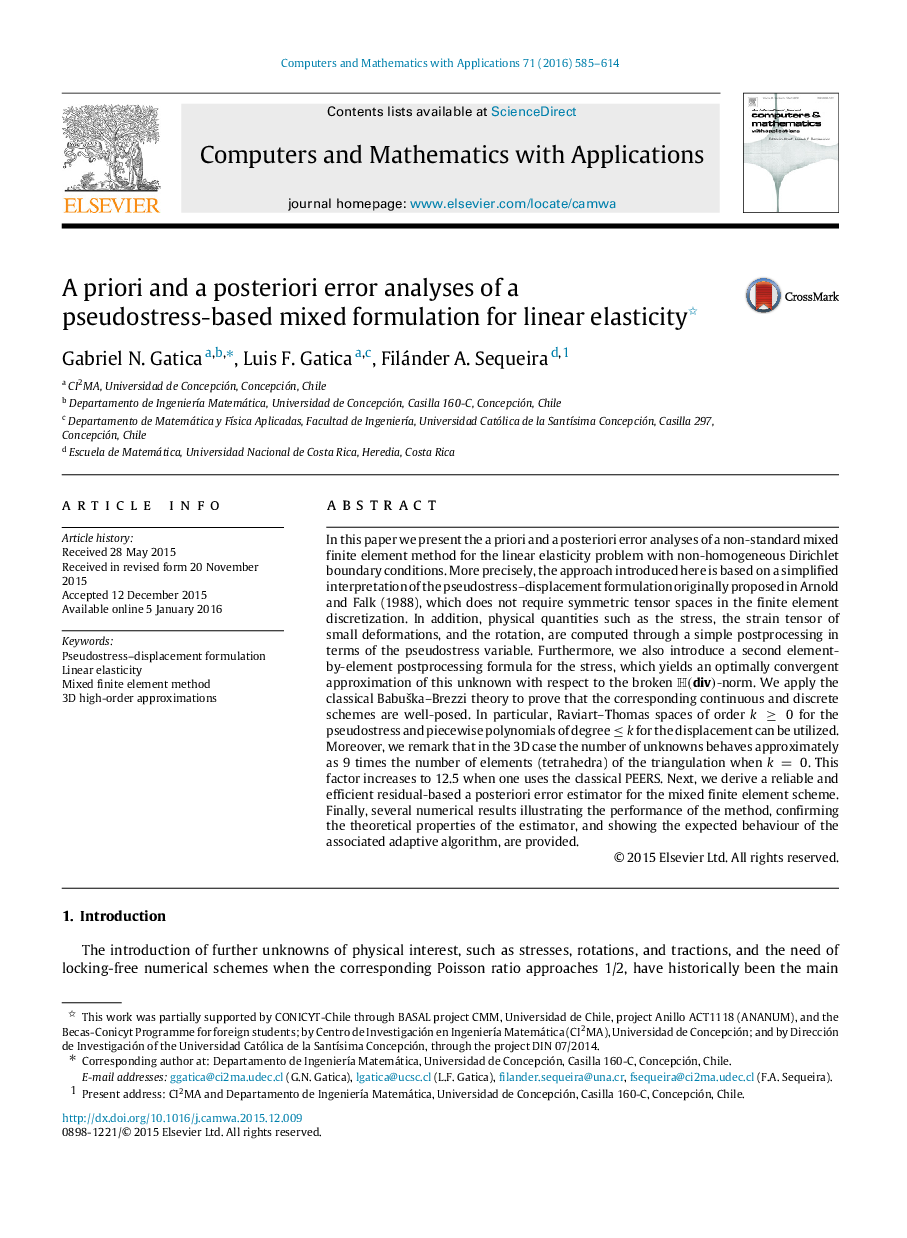| کد مقاله | کد نشریه | سال انتشار | مقاله انگلیسی | نسخه تمام متن |
|---|---|---|---|---|
| 471432 | 698632 | 2016 | 30 صفحه PDF | دانلود رایگان |
In this paper we present the a priori and a posteriori error analyses of a non-standard mixed finite element method for the linear elasticity problem with non-homogeneous Dirichlet boundary conditions. More precisely, the approach introduced here is based on a simplified interpretation of the pseudostress–displacement formulation originally proposed in Arnold and Falk (1988), which does not require symmetric tensor spaces in the finite element discretization. In addition, physical quantities such as the stress, the strain tensor of small deformations, and the rotation, are computed through a simple postprocessing in terms of the pseudostress variable. Furthermore, we also introduce a second element-by-element postprocessing formula for the stress, which yields an optimally convergent approximation of this unknown with respect to the broken H(div)-norm. We apply the classical Babuška–Brezzi theory to prove that the corresponding continuous and discrete schemes are well-posed. In particular, Raviart–Thomas spaces of order k≥0k≥0 for the pseudostress and piecewise polynomials of degree ≤k≤k for the displacement can be utilized. Moreover, we remark that in the 3D case the number of unknowns behaves approximately as 9 times the number of elements (tetrahedra) of the triangulation when k=0k=0. This factor increases to 12.5 when one uses the classical PEERS. Next, we derive a reliable and efficient residual-based a posteriori error estimator for the mixed finite element scheme. Finally, several numerical results illustrating the performance of the method, confirming the theoretical properties of the estimator, and showing the expected behaviour of the associated adaptive algorithm, are provided.
Journal: Computers & Mathematics with Applications - Volume 71, Issue 2, January 2016, Pages 585–614
